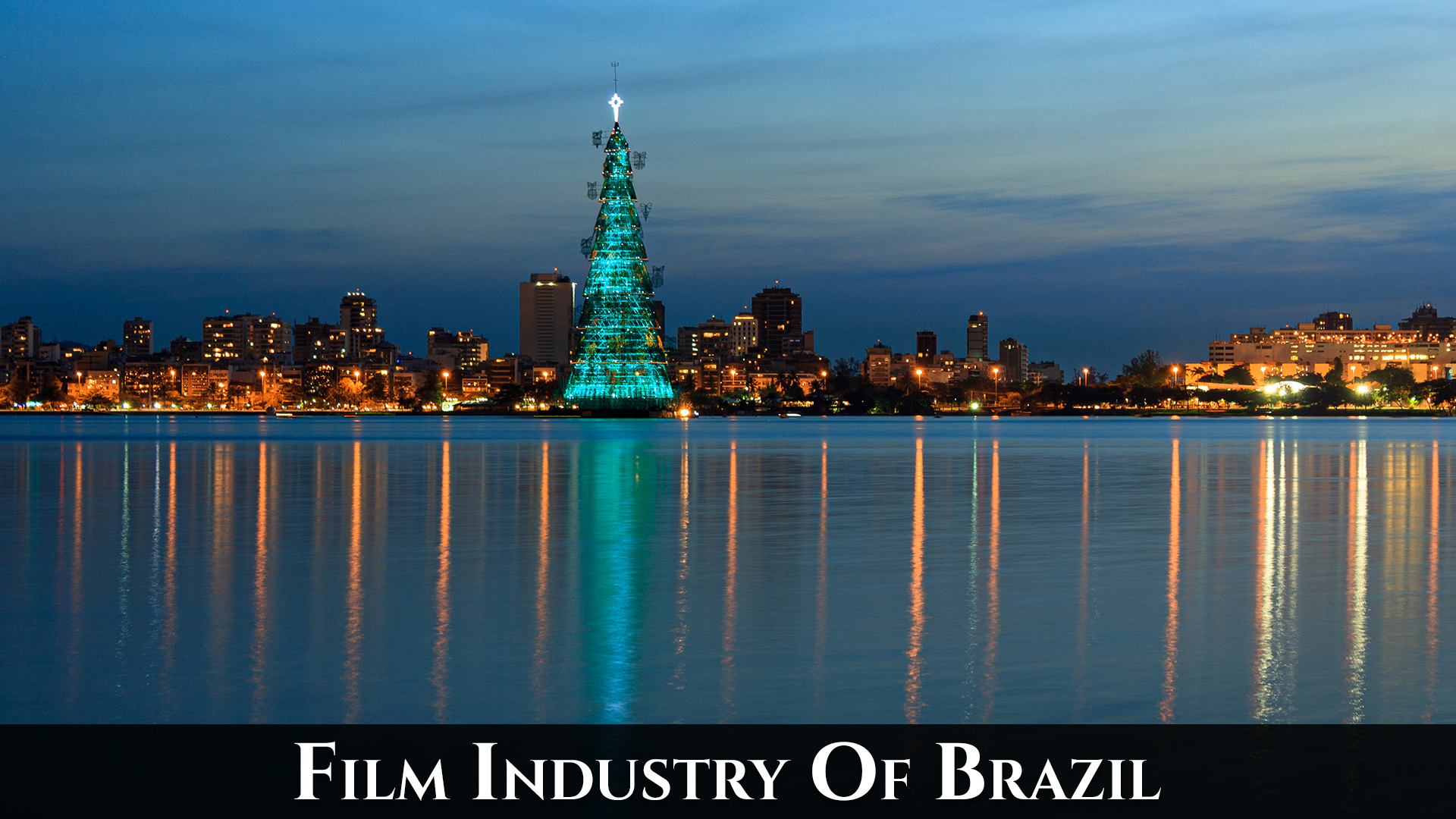
The Film Industry in Brazil has a rich and diverse history that spans over a century marked by periods of growth, challenges and significant contributions to global cinema. Brazil’s Film Industry reflects the country’s cultural diversity, social issues, and unique storytelling traditions.
Brazil is the largest country in Latin America, but its box office revenue is not quite there yet. In 2021 it amounted to about 176 million U.S. dollars, less than half of the result recorded in Mexico that same year. The Portuguese-speaking Country holds the silver medal in the region’s film industry by many measures but it also has the potential to thrive in that field
Brazilian films began in the late 19th century with the introduction of film technology. The first recorded Brazilian film, Santos Dumont was produced in 1898 by filmmaker Afonso Segreto. The early years were characterized by short films and documentary films often depicting daily life in Brazil.
Brazil’s first movie theatres opened in 1897, paving the way for Brazil’s Golden Age of Film followed by the birth of Brazil’s Short Film tradition. One of the most productive periods for Brazilian movies began in the Sixties with Cinema Novo, which often focused on social reform. Its influence remains strong still today.
Brazil’s Film Industry has never been brighter, due in part to a surge of film productions for Amazon, HBO, and Netflix. Brazil owes its cinematic beginnings to a pair of 1890s tech geeks: Pascoal and Afonso Segreto, young Brazilian Italian immigrants with an eye for emerging platform for filmmaking. They find one in the Brazilian winter of 1896. A new invention from France, on display in Rio de Janeiro, called the Cinématographe, a wooden box on a tri-pole stands that films and projects short motion pictures.
Golden Age of Brazilian Films:
The 1930s marked a significant period for Brazilian Films with the advent of sound in films. This era, known as the “Ciclo de Ouro” or Golden Age, saw the emergence of iconic filmmakers such as Glauber Rocha, Nelson Pereira dos Santos, and Humberto Mauro. The films of this period often explored Brazilian identity, social issues, and incorporated elements of regionalism.
Cinema has always been very popular in Brazil. By the 1930s, even the smallest towns in the Northeastern interior had their own modest movie palaces screening Hollywood flicks. In Rio, Praça Floriano became known as Cinelândia after the elegant Downtown Square was lined with sumptuous art deco Movie Palaces. Rio was also the birthplace of the Brazilian Movie Industry. In 1930, Cinédia Studios began churning out a series of popular romances and burlesque musical film comedies known as Chanchadas some of which satirized Hollywood Fare.
In the 1960s, the Cinema Novo Movement emerged as a response to the commercialization of Brazilian Cinema. Filmmakers like Glauber Rocha and Nelson Pereira dos Santos sought to create a new form of cinema that was politically engaged and artistically Innovative. The movement focused on social realism addressing issues such as poverty, inequality, and political unrest.
Government Support and Challenges:
The Brazilian Government has played a crucial role in supporting the film industry. The National Cinema Agency (ANCINE) was established in 2001 to regulate and promote the movie industry of Brazil. Additionally, tax incentives and funding programs have been implemented to encourage film production. Despite government support, the Cinema Industry has faced challenges such as budget constraints, piracy and competition from Hollywood.
Global Recognition of Brazilian Films:
Brazilian movies have gained International film acclaim, with notable works like City of God (2002) directed by Fernando Meirelles and Kátia Lund. Also Central Station (1998) directed by Walter Salles receiving widespread recognition. These films not only garnered film awards but also brought attention to Brazilian Cinema on the global stage.
Diversity of Themes:
Brazilian films reflects the country’s cultural, racial and social diversity. Themes such as Afro-Brazilian Culture, indigenous issues and urban struggles are often explored in films. Film directors like Kleber Mendonça Filhoand Anna Muylaert have gained recognition for their films addressing contemporary social issues in Brazil.
In recent years, films in Brazil has continued to evolve with a mix of commercial and independent film productions. The rise of online streaming film platforms has provided new opportunities for filmmakers to showcase their work to a global audience for cinema. Additionally, the success of Brazilian Movies at International Film Festivals has contributed to the industry’s visibility and recognition.
Brazil’s Cinematic history is rich with great films. Today, Brazil’s cinema is the most varied, surprising, and inventive in South America. Brazilian films carry a distinct identity and a personal way of expressing their stories. Music is at the heart of Brazilian cinema together with a social conscience that is never far from the surface. You’ll see this even in the simplest comedy movie.
For the Brazilian Government, Film Production is an important industry that must be assisted through incentives to promote and grow the cinema industry in the country and to promote the National Production of Films and their distribution not only domestically but also on overseas. The recovery of this industry in the country can be perceived by the number of Brazilian Films Festivals and events organized by ANCINE– the National Agency of Cinema – and the increasing number of national hub for film exposition.
The Film industry in Brazil has a rich history marked by artistic Innovation, social engagement and a diverse range of themes. Despite facing challenges, Brazilian movies continues to make a significant impact both domestically and internationally contributing unique perspectives to the global cinematic landscape.
